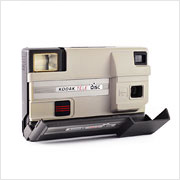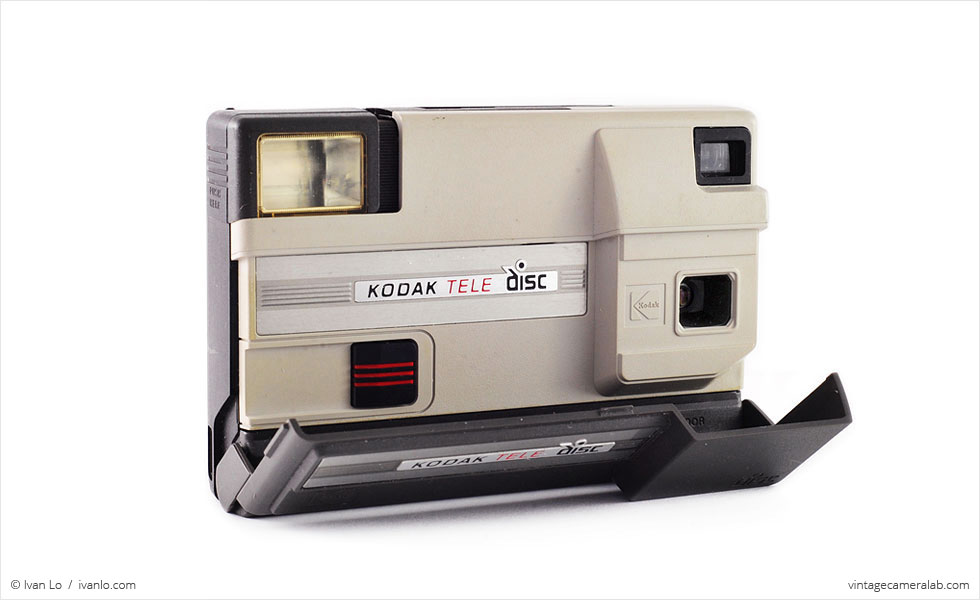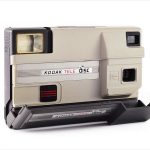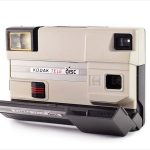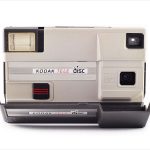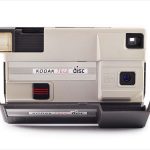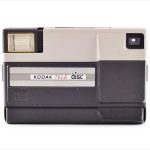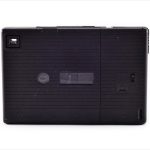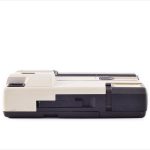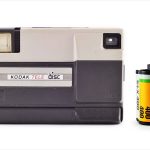Kodak Tele Disc Specifications
| Manufacturer: | Eastman Kodak Company |
| Origin: | USA |
| Made in: | Rochester, NY, USA |
| Introduced: | 1985 |
| Type: | Subminiature, Viewfinder |
| Format: | Disc Film |
| Dimensions: | 12 x 8 x 3.4 cm |
Kodak Tele Disc Overview
In 1982, Kodak launched what they thought would be a revolutionary product: disc film. Instead of fumbling around with roll film or awkwardly shaped cartridges, consumers could now load their cameras by simply inserting a thin, sleek bit of plastic into the back.
A disc film cartridge is a bit smaller than a 3.5 inch floppy disk and behaves much like the disk for a View-Master. Pressing the red-striped shutter button exposes a 8x11mm frame on the disk, which then rotates 24° for the next photo for a total of 15 frames per cartridge. Despite the convenience and foolproof loading procedure, disc film was a big commercial failure. Although new emulsion technology at the time meant that the tiny negatives contained a relatively surprising amount of detail, graininess, and poor image quality disappointed consumers and led to disc film’s ultimately forgettable demise.
The Kodak Tele Disc was introduced in the middle of the short-lived disc camera era in order to spice up Kodak’s lineup. Interestingly, the Tele Disc has two lens choices: a normal 12.5mm f/4 and 22mm f/5.6 telephoto. Unlike the Ricoh R1 which relies on the insertion of additional optical elements to modify the focal length, the Tele Disc actually has two separate lenses. Extending the flash rotates the telephoto lens into place and also swaps in a new viewfinder.
I almost didn’t buy the Tele Disc as I already had two relatively unremarkable Kodak disc cameras and wasn’t really interesting in adding yet another one to my collection. Then I discovered the second lens and crumbled (I’ve got a soft spot for dual lens cameras), trading $1.99 for it at the thrift store. The icing on the cake came when I discovered that this particular specimen’s two-tone body makes it relatively uncommon as far as Kodak Tele Discs go.
Find your very own Kodak Tele Disc on eBay.
“Kodak Tele Disc,” Camerapedia, http://camerapedia.wikia.com/wiki/Kodak_Tele_Disc
